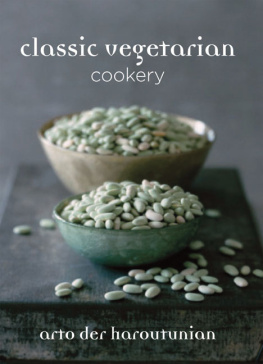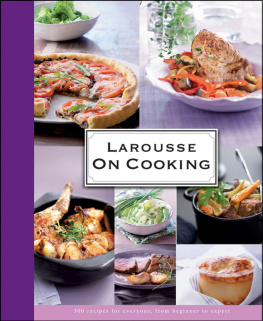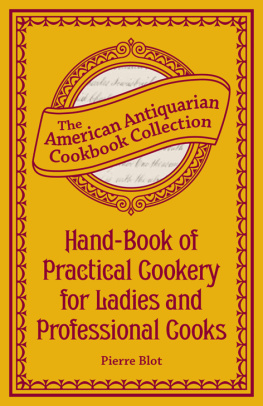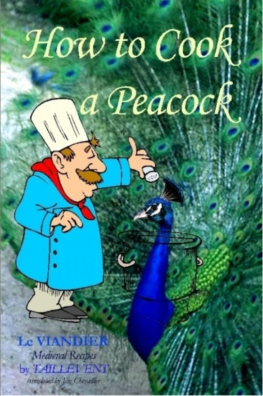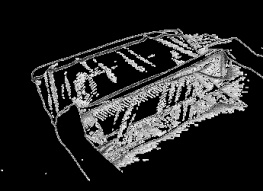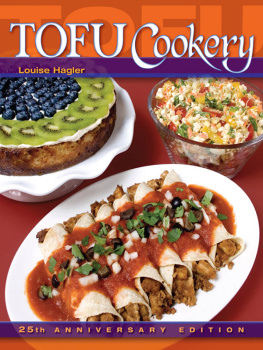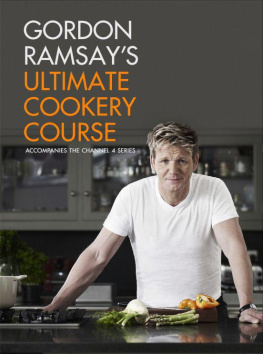Pleyn Delit
Medieval Cookery for Modern Cooks Second Edition
This is a completely revised edition of the classic cookbook that makes genuine medieval meals available to modern cooks. Using the best recipes from the first edition as a base, Constance B. Hieatt and Brenda M. Hosington have added many new recipes from more countries to add depth and flavour to our understanding of medieval cookery. All recipes have been carefully adapted for use in modern kitchens, thoroughly tested, and represent a wide range of foods, from appetizers and soups, to desserts and spiced wine.
The approach to cooking is entirely practical. The emphasis of the book is on making medieval cookery accessible by enabling todays cooks to produce authentic medieval dishes with as much fidelity as possible. All the ingredients are readily available; where some might prove difficult to find, suitable substitutes are suggested. While modern ingredients which did not exist in the Middle Ages have been excluded, modern time- and energy-saving appliances have not. Authenticity of composition, taste, and appearance are the books main concern.
Unlike any other published book of medieval recipes, Pleyn Delit is based on manuscript readings verified by the authors. The introduction provides a clear explanation of the medieval menu and related matters to bring the latest medieval scholarship to the kitchen of any home.
CONSTANCE B. HIEATT is Professor Emeritus of English, University of Western Ontario, and has made medieval studies her profession for forty years. She initiated an annual medieval feast potluck among her colleagues from which this book developed.
BRENDA M. HOSINGTON is Professeur titulaire, Linguistique, Universit de Montral. She contributed to Constance Hieatts first medieval feast and has maintained the Hieatt tradition of both teaching and cooking for her graduate students.
The late SHARON BUTLER co-authored the first edition of Pleyn Delit with Constance Hieatt. She was an editor of the Dictionary of Old English, and a talented artist whose illustrations grace the volume.
Pleyn Delit
Medieval Cookery for Modern Cooks
Second Edition
Constance B. Hieatt, Brenda Hosington, and Sharon Butler


www.utppublishing.com
First edition
University of Toronto Press 1976
First paperback edition 1979
Second edition
University of Toronto Press Incorporated 1996
Toronto Buffalo London
Printed in Canada
Reprinted 1997, 2000, 2004
ISBN 08020-0678-7 (cloth)
ISBN 08020-7632-7 (paper)

Printed on acid-free paper
Canadian Cataloguing in Publication Data
Hieatt, Constance B., 1928
Pleyn delit: medieval cookery for modern cooks
2nd ed.
Includes bibliographical references and index.
ISBN 08020-0678-7 (bound) ISBN 08020-7632-7 (pbk.)
I. Cookery. I. Butler, Sharon, 1942
II. Hosington, Brenda. III. Title.
TX652.H54 1996 641.5 C95-932306-6
University of Toronto Press acknowledges the financial assistance to its publishing program of the Canada Council and the Ontario Arts Council.
University of Toronto Press acknowledges the financial support for its publishing activities of the Government of Canada through the Book Publishing Industry Development Program (BPIDP).
In memoriam:
Sharon Butler, Allan Fleming, Prudence Tracy
Contents
Preface to the Revised Second Edition
When the late Sharon Butler and I published the first edition of Pleyn Delit in 1976, neither of us had had any opportunity to consult the manuscripts containing the recipes and we had to depend on what printed editions were then available. The expertise we brought to bear was more culinary than scholarly, as we had been adapting medieval recipes for our own tables, and for our friends and colleagues, for quite a few years. Among those friends and colleagues, one who was especially helpful in developing recipes was Brenda Hosington, then Thaon. It was, thus, eminently suitable that Professor Hosington be the scholar who published a French translation and adaptation of the book, Pain, Vin et Veneison, in 1977.
In the intervening year, Dr Butler and I had discovered several errors in the first edition; Professor Hosington was able to incorporate our corrections in her adaptation, which thus agrees with the 1979 reprinting of Pleyn Delit, not the original edition. But, by 1979, Dr Butler and I had started work on manuscripts for our edition Curye on Inglysch: English Culinary Manuscripts of the Fourteenth Century (Including the Forme of Cury); this was published in 1985, not long before Dr Butlers untimely death. As we worked on it, we learned a great deal, and, predictably, found that the eighteenth- and nineteenth-century editions on which we had based our original work were gravely flawed. We knew we should eventually do a complete revision of our first book; but Dr Butler was by then too seriously ill to work on this, let alone do further work on the edition of a fifteenth-century recipe collection we had originally planned to collaborate on. I was fully occupied in completing that edition by myself until it appeared as An Ordinance of Pottage in 1988.
It was, thus, a great relief to me when Professor Hosington agreed to collaborate in making a proper revision of Pleyn Delit. After twenty years, it was about time: not only has her knowledge of the field of medieval cookery, and my own, increased vastly, but also an ever greater interest in this area has resulted in a tremendous amount of publication in the 1980s and early 1990s: there is now much more reliable information available. It would have been extremely embarrassing to let the original book go through more printings without this kind of fundamental revision. We feel complimented by the others who have borrowed from our recipes in more recent books, but they have sometimes borrowed our mistakes, and it appears to be up to us to correct this situation.
This second edition, then, represents the work of three collaborators. Dr Butler obviously had nothing to do with the revision, but she is represented by some of the original recipes and a few of the new ones (for example, she wrote the earliest version of the ravioli recipe, which is printed here for the first time), by her participation in producing the new texts of fourteenth-century recipes here printed in the versions published in Curye on Inglysch, and by her inimitable medieval-style artwork. Professor Hosington and I have shared the research involved, and have both revised, adapted, and tried out our own and each others recipes; we take equal responsibility for whatever virtues or failings the new edition may be perceived as having.
Finally, of course, we owe a great debt to hundreds of people who have worked with us, cooked or tasted our food, or corresponded about the book over the years: there are far too many to make a list possible, although we must express our gratitude to Margaret Scanlon, who helped us with a recipe specifically for this edition. And perhaps we should say we owe special debts to the culinary historians Jean-Louis Flandrin and Karen Hess, both of whom have offered highly knowledgeable comments. But then, so did the great cooks (and fellow cookbook writers) Louis Szathmary and the late Jane Grigson - among dozens of others. Our husbands, A. Kent Hieatt and Howard Norland, have suffered through many a dubious culinary experiment, and applauded enthusiastically when we did better; we can hardly thank them sufficiently for both practical and editorial criticism and encouragement. Our sympathetic editor, Suzanne Rancourt, deserves warm appreciative mention, too.
Next page

